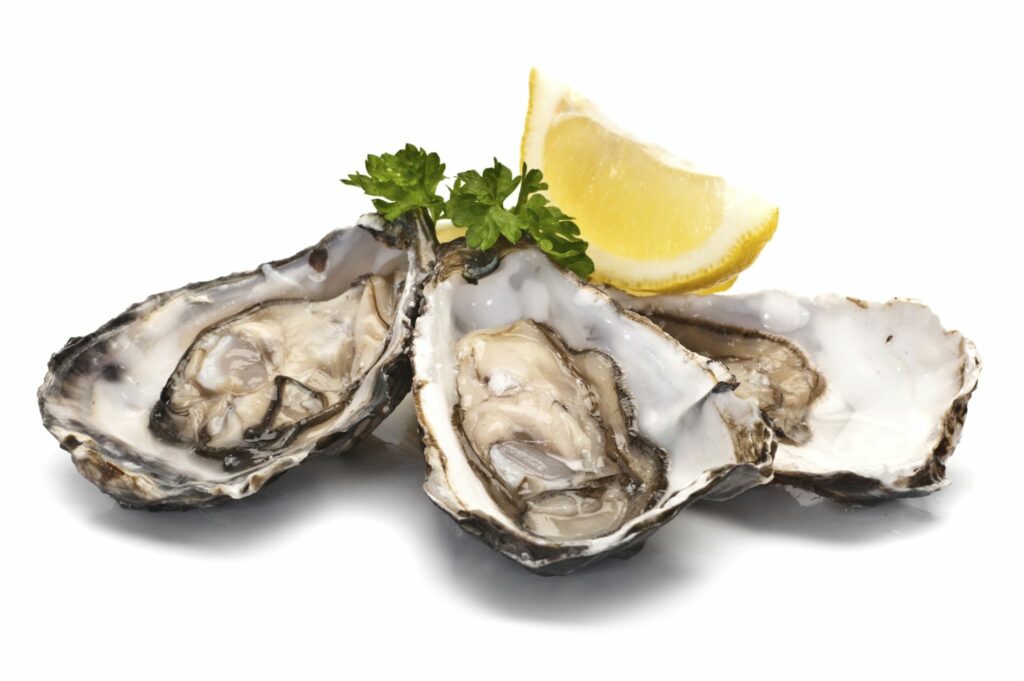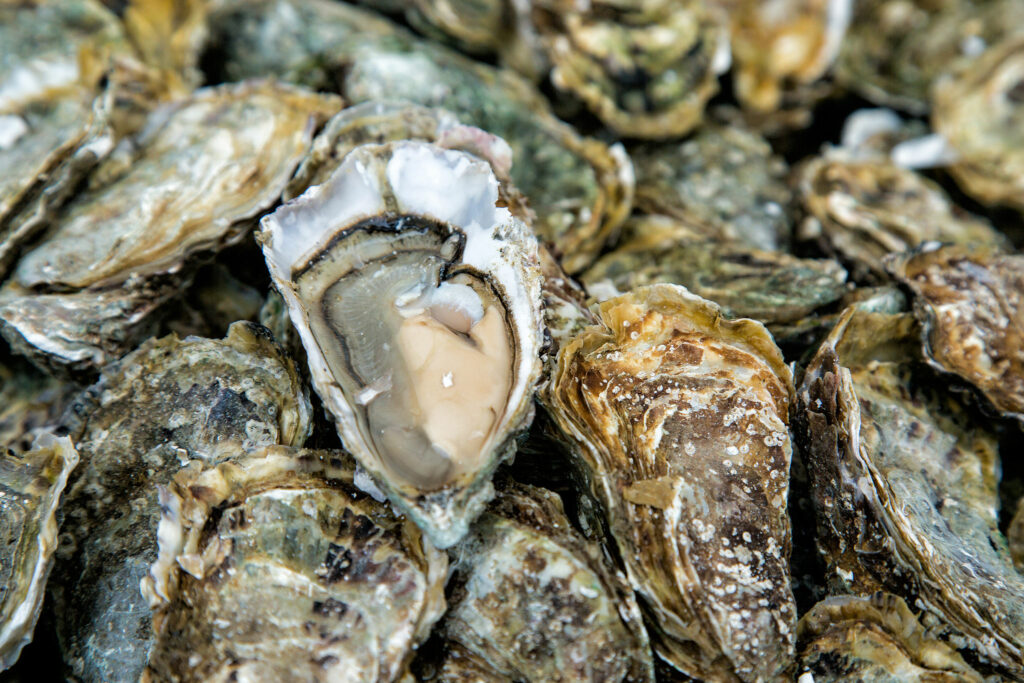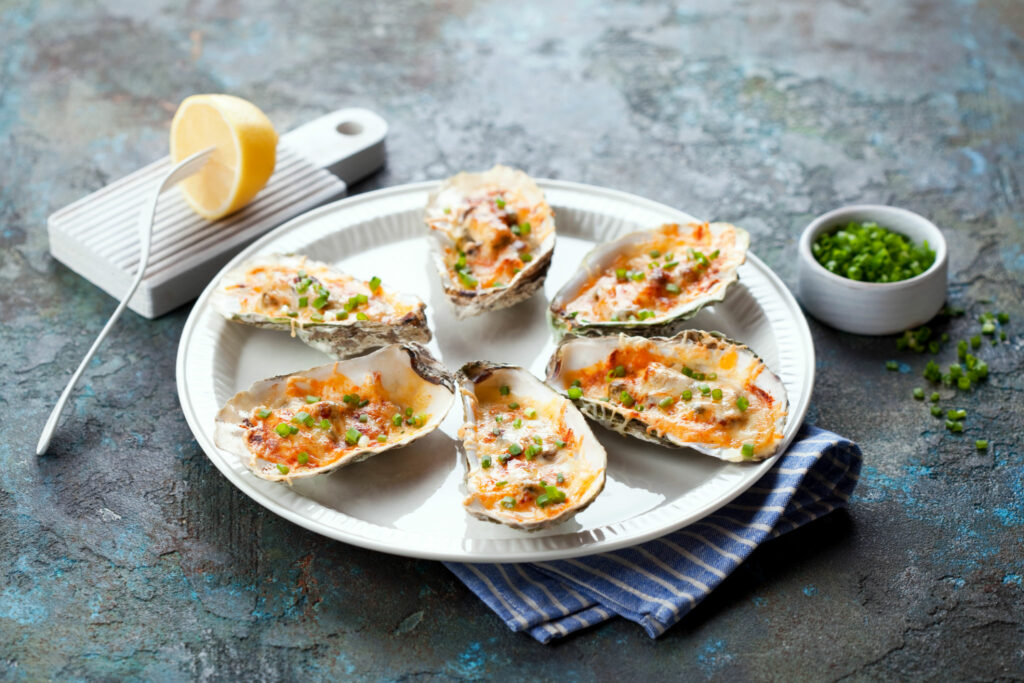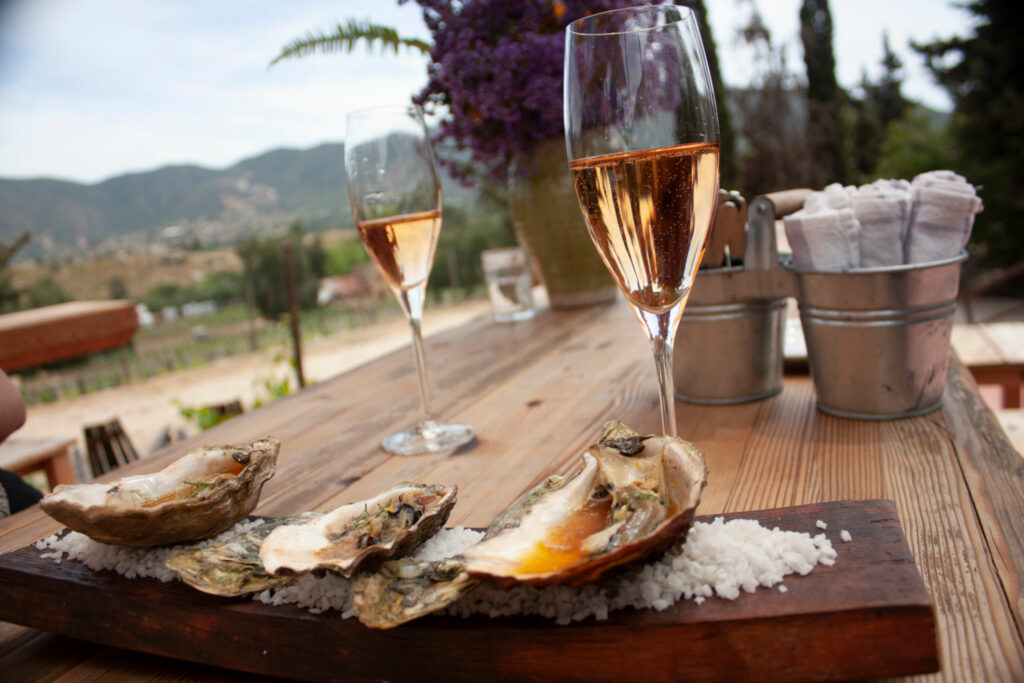Oysters are a kind of shellfish that are prized for their delicate flavor and tender texture. They can cook in plenty of ways, but the most popular methods are steaming or grilling.

It guide will teach you how to cook oysters so they are delicious and safe to eat. Whether you want to bake, fry, or grill them, follow these tips, and you’ll be enjoying this seafood treat in just minutes.
The Different Types Of Oysters!

Before diving into cooking methods, let’s first talk about the different types of oysters. There are three main types of oysters: Pacific, Atlantic, and Kumamoto.
· Pacific Oysters
Pacific oysters are the most common type of oyster. They are large and have a mild flavor. Pacific oysters are usually harvested in the spring and summer.
For this reason, they are sometimes called “spring oysters.” While they can be found year-round, they are at their peak during the warmer months. The best part about Pacific oysters is that they are easy to find and relatively affordable.
· Atlantic Oysters
Atlantic oysters are native to the East Coast of the United States. They are small and have a salty flavor. These are usually harvested in the fall and winter. If the water is too cold, they will not be as flavorful. Because of this, Atlantic oysters are sometimes called “winter oysters.” In general, they are more expensive than Pacific oysters.
· Kumamoto Oysters
Kumamoto oysters often have a sweet flavor with a hint of cucumber. They are small to medium in shape and have a deep cup shape. Kumamoto oysters are usually harvested in the summer.
With that being said, they can be found year-round in some areas. You don’t have to worry about them being out of season like you do with Atlantic oysters. Kumamoto oysters can be expensive, but they are worth it.
Oyster Recipes For Beginners!

Now that you know a small bit about the different types of oysters, let’s get into the top delicious oyster recipes. These recipes are ideal for beginners and will help you get started with cooking oysters.
1. Grilled Oysters With Breadcrumbs.
When the temperature is warm, there’s nothing better than grilled oysters. This recipe is simple and delicious. All you need is some breadcrumbs, Parmesan cheese, and garlic. You can also add herbs like parsley or thyme for extra flavor. On a hot summer day, grilled oysters are the perfect meal.
2. Baked Oysters With Parmesan Cheese.
This recipe is similar to the grilled oysters, but it’s baked in the oven. It’s a great option if you don’t have a grill or if you’re looking for a more casual dish.
Baked oysters are just as delicious as grilled oysters, and they’re perfect for parties or gatherings. A few people like to add hot sauce or Worcestershire sauce to their baked oysters. Get creative and experiment with different flavors.
3. Fried Oysters With Tartar Sauce.
If you are in the mindset for something fried, this recipe is for you. Fried oysters are crispy and delicious. They are suitable as an appetizer or a main course. Serve them with some tartar sauce or lemon wedges, and you’re good to go. Have fun with this recipe and experiment with different dipping sauces.
4. Oyster Stew.
Oyster stew is a classic winter dish. It’s warming and comforting, and it’s perfect for a cold night. This recipe is simple to make and can be customized to your liking. Add some potatoes, carrots, or celery for extra flavor and nutrition. More adventurous eaters can even add some bacon or sausage. It’s a hearty dish that will provide you warm all winter long.
5. Raw Oysters With Mignonette Sauce.
If you’re feeling adventurous, try raw oysters with mignonette sauce. This dish is simple but elegant. All you need is some freshly shucked oysters and a mignonette sauce made with shallots, vinegar, and black pepper. It’s the perfect way to enjoy the delicate flavor of oysters. So, if you’re feeling brave, give this recipe a try.
How To Cook Oysters?

Now that you know a small bit about the different types of oysters, it’s time to learn how to cook them. Here are some directions and tricks to help you get started.
1. Start With Fresh Oysters.
It may seem to like a no-brainer, but it is important to start with fresh oysters. Oysters that have been sitting out of water for too long will not be as fresh and will not taste as good.
If you’re not sure if your oysters are fresh, ask your fishmonger. They should be able to say you when the oysters were harvested and how long they’ve been out of water.
2. Don’t Over Think It.
Cooking oysters is simpler than you might think. You don’t need any special equipment or skills. Just a little bit of sense and some basic kitchen supplies. So, don’t over think it. Just get started and see how it goes.
3. Choose The Right Cooking Method.
There are various ways to cook oysters. You can grill them, bake them, fry them, or even eat them raw. It all depends on your preferences. If you’re not sure what cooking method to use, ask your fishmonger for some advice. They can tell you what kind of methods will work best for the type of oysters you have.
4. Be Careful Not To Overcook Them.
Oysters are delicate and can be easily overcooked. The general rule is that you should only cook them for 3-5 minutes. Any longer than, and they will start to lose their flavor and become tough.
So, be careful not to overcook them. That being said, there’re some recipes that call for longer cooking times. If you’re unsure, it’s always better to err on the side of caution and cook them for less time rather than more.
5. Use Fresh Herbs And Spices.
Herbs and spices can really improve the flavor of oysters. Some great options include parsley, thyme, rosemary, garlic, and lemon. Get creative and experiment with different flavors. You might be surprised at what you like.
6. Add Some Acidity.
Acidity is a key component in many oyster dishes. It can balance out the richness of the oysters and brings out their natural flavor. Some common acids used in cooking oysters are lemon juice, white vinegar, or red wine vinegar.
7. Serve Them With A Dipping Sauce.
Dipping sauces are an amazing way to add some extra flavor to your oysters. There are many different sauces that you can use, so feel free to get creative. Some of my favorites include cocktail sauce, tartar sauce, and remolded.
8. Enjoy!
Most importantly, don’t forget to enjoy your oysters. Cooking them is only half the fun. The other half is eating them! So, relax and appreciate the fruits of your labor. Bon appetite!
Pairing Wine With Oysters!

Oysters are a popular dish, and many people enjoy them with wine. What type of wine should you duo with oysters? Don’t worry; I’ve got you covered. Here are some great wine pairing ideas for oysters.
1. Champagne.
Oysters and champagne are a classic pairing. The bubbly wine helps to cleanse the palate and brings out the briny flavor of the oysters. You can’t go wrong with it; classic combo. Many people prefer to pair champagne with raw oysters, but it also goes well with grilled or baked oysters.
2. Chardonnay.
Chardonnay is a rich, buttery wine that pairs well with oysters. The creamy texture of the wine can help to offset the brininess of the oysters.
If you’re looking for a white wine to pair with oysters, chardonnay is a great option. For a truly unique experience, try pairing chardonnay with grilled oysters. The smoke from the grill will add a new dimension to the wine. If you wonder how to make smoked oysters (5 super simple steps), it’s very easy if you have proper cooking guidelines.
3. Sauvignon Blanc.
Sauvignon Blanc is a crisp, waterless white wine. This has a refreshing acidity that pairs well with oysters. The wine can help to highlight the natural sweetness of the oysters. With its bright flavor, Sauvignon Blanc is the best option for raw oysters. No matter how you serve them, Sauvignon Blanc is a great wine to pair with oysters.
4. Riesling.
Riesling is a sweet white wine that offers a perfect balance to the brininess of oysters. During the summer months, Riesling can be a refreshing option. For an extra special treat, try pairing Riesling with grilled oysters. Its sweetness will help to offset the smoky flavor of the grill.
5. Pinot Noir.
This red wine is a superb option for those who prefer red wine with their oysters. Pinot Noir has a light body and low tannins, making it a perfect pairing for oysters.
A glass of Pinot Noir can bring out the natural sweetness of the oysters. You do not desire to overpower the delicate flavors of the oysters, so be sure to choose a light Pinot Noir.
Conclusion
Whether you are a first-time oyster cook or an experienced chef, I hope that the tips above have helped to make your experience preparing these mollusks a success. As with any seafood, freshness is important, so be sure to get your oysters from a reputable source and store them properly until it’s time to cook.
I wish you all the best in your culinary endeavors and look forward to hearing about your successes (and failures) in the kitchen! Don’t forget to check out GrillCharms – Your one-stop solution to grilling.
- The 9 Best BBQ Grills for Smoking Brisket - December 29, 2022
- 6 Mouth Watering Grilled Shrimp Recipes - September 16, 2022
- 6 Delicious Grilled Desserts - September 16, 2022
